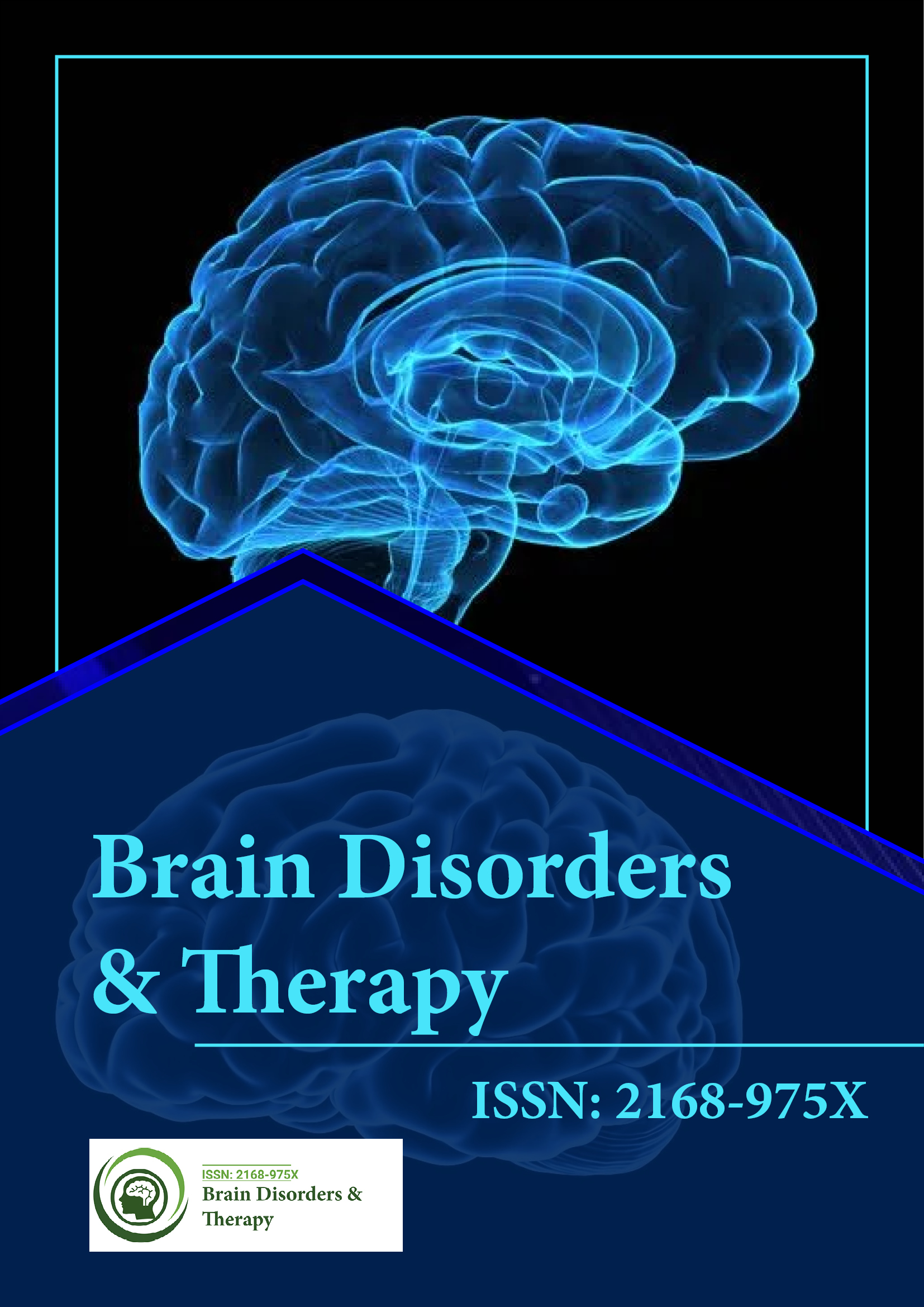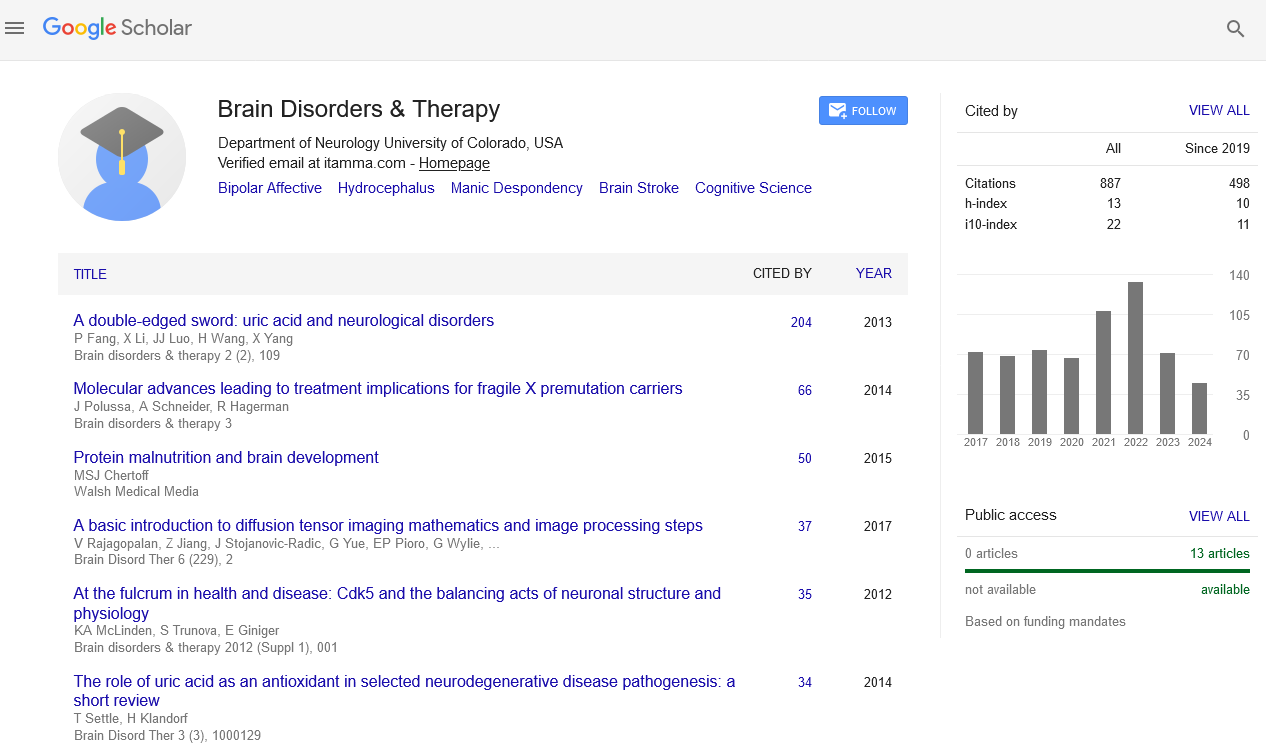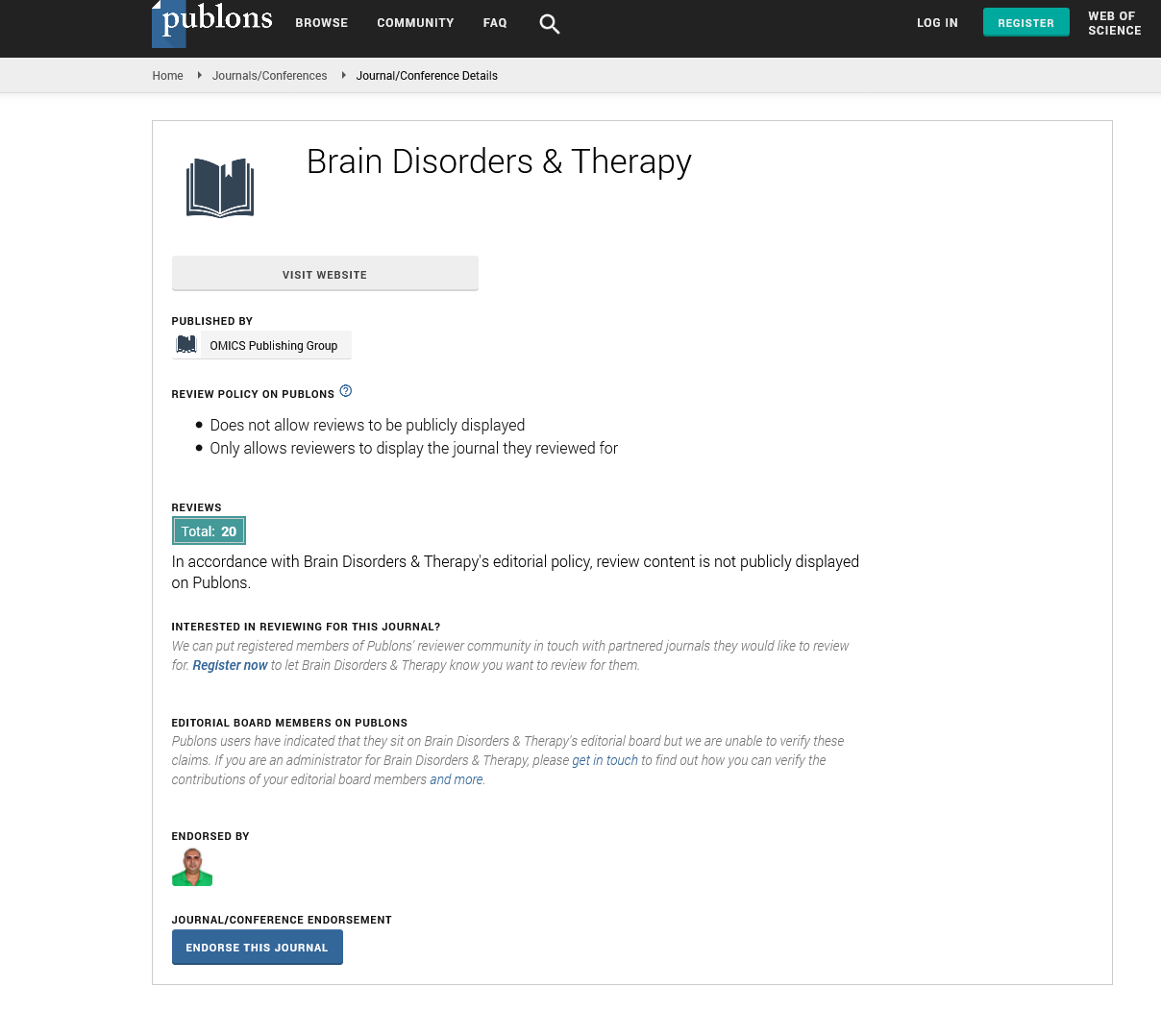Indexed In
- Open J Gate
- Genamics JournalSeek
- JournalTOCs
- RefSeek
- Hamdard University
- EBSCO A-Z
- OCLC- WorldCat
- Publons
- Geneva Foundation for Medical Education and Research
Useful Links
Share This Page
Journal Flyer

Open Access Journals
- Agri and Aquaculture
- Biochemistry
- Bioinformatics & Systems Biology
- Business & Management
- Chemistry
- Clinical Sciences
- Engineering
- Food & Nutrition
- General Science
- Genetics & Molecular Biology
- Immunology & Microbiology
- Medical Sciences
- Neuroscience & Psychology
- Nursing & Health Care
- Pharmaceutical Sciences
Perspective - (2024) Volume 13, Issue 3
Utilizing Predictive Models to Guide Functional Recovery in Stroke Survivors
Hongmei Lu*Received: 26-Aug-2024, Manuscript No. BDT-24-27114; Editor assigned: 29-Aug-2024, Pre QC No. BDT-24-27114(PQ); Reviewed: 12-Sep-2024, QC No. BDT-24-27114; Revised: 19-Sep-2024, Manuscript No. BDT-24-27114(R); Published: 26-Sep-2024, DOI: 10.35248/2168-975X.24.13.275
Description
Stroke remains one of the leading causes of long-term disability worldwide, impacting millions of individuals and presenting a challenge to healthcare systems. For stroke survivors, regaining lost abilities and achieving functional independence are primary goals in recovery and rehabilitation plays a critical role in reaching these outcomes. In recent years, predictive models have emerged as powerful tools in stroke rehabilitation, offering personalized recovery predictions and guiding tailored interventions. These models, built from patient data and outcome studies, are proving invaluable in optimizing functional recovery, enhancing clinical decision-making and setting realistic expectations for patients and families.
Predictive models in stroke rehabilitation aim to forecast a patient’s recovery trajectory based on initial injury severity, demographics, health status and other specific factors. By harnessing predictive analytics, clinicians can move beyond general rehabilitation approaches and focus on personalized, data-driven care. The effectiveness of these models lies in their ability to use large data sets and identify patterns that correlate with recovery outcomes. For instance, they can assess factors such as age, stroke type, initial motor function and the presence of comorbid conditions to estimate the probability of regaining certain functional abilities.
Predictive models also play a significant role in resource allocation. Rehabilitation programs often require extensive physical, occupational, and speech therapy, which can be resource-intensive and time-consuming.
Despite their promise, predictive models for stroke recovery face challenges. One limitation is the variability in stroke types and patient profiles, which makes it difficult to develop one-size-fitsall models. Further, predictive models are only as good as the data they are trained on; thus, limited access to comprehensive and high-quality datasets can hinder their accuracy.
Future advancements in predictive modeling for stroke recovery will likely focus on enhancing data collection and integrating diverse data sources, such as genetic information and lifestyle factors. Additionally, incorporating real-time patient feedback during rehabilitation can improve model accuracy, as ongoing data collection reflects actual progress and allows models to adapt.
Predictive models also enhance communication between healthcare providers and patients. Clinicians can use model projections to help patients understand their expected recovery journey, explaining which abilities they are likely to regain and which may require longer or more intensive rehabilitation efforts. This clarity can reduce anxiety, improve patient engagement, and foster adherence to therapy programs.
Additionally, predictive models can support clinical decisionmaking by helping healthcare providers allocate resources more effectively. Given the high costs associated with stroke rehabilitation, especially in inpatient settings, targeted resource allocation ensures that therapies are provided to those with the highest potential for benefit. This approach not only conserves healthcare resources but also increases the overall efficacy of rehabilitation programs.
Conclusion
The immersive, interactive nature of VR exergames has the potential to revolutionize stroke recovery, transforming rehabilitation into a more motivating and effective process. As technology continues to evolve and as more research is conducted, VR exergames are likely to become a valuable tool in the future of stroke rehabilitation, helping patients regain independence and improve their quality of life.
Citation: Lu H (2024). Utilizing Predictive Models to Guide Functional Recovery in Stroke Survivors. Brain Disord Ther. 13:275.
Copyright: © 2024 Lu H. This is an open-access article distributed under the terms of the Creative Commons Attribution License, which permits unrestricted use, distribution, and reproduction in any medium, provided the original author and source are credited.


